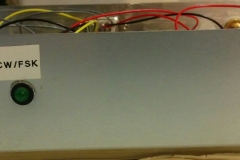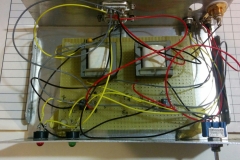sv1/sv5fri
Installation and Configuration Script for Dxspider
With this script you can install and configure in the few minutes the DxSpider Cluster
For any issue or support relevant to script:
- Create issue ticket here
- Use comment or contact form
Installation Steps
Download script.
wget https://gitlab.com/glaukos/dxspider_installation_script/-/archive/master/dxspider_installation_script-master.tar.gz
Must be run as root user.
Uncompress & change permissions
tar xvfz dxspider_installation_script-master.tar.gz cd dxspider_installation_script-master chmod +x setup_dxspider.sh
Run script and follow the messages.
./setup_dxspider.sh
Script has been tested on the following Operating Systems (Linux Distributions)
CentOS 7
Raspbian 7 (Wheezy)
Raspbian 8 (Jessie)
Raspbian 9 (stretch)
Debian GNU/Linux 9 (stretch)
Install DxSpider on CentOS 7 / RHEL 7
Revision: 1.00 – 07/05/2018
Here you find my installation guide how to install DxSpider on CentOS 7 / RHEL 7. Also you can find more information here wiki.dxcluster.org. If you need help please contact with me.
Furthermore if you don’t want make manual installation you can used my script for the installation and configuration Dxspider (The firewall and services must be configure manual).
1. First login as root.
SeLinux is by default enabled and there is no need to disable it for running a telnet DxSpider node.
yum is the package manager
to update the system use
# yum update
as the root user install the additional package repository EPEL
# yum install epel-release
2. Add the extra packages needed by DXSpider
# yum install perl-TimeDate perl-Time-HiRes perl-Digest-SHA1 perl-Curses perl-Net-Telnet git gcc make perl-Data-Dumper perl-DB_File
3. Create user sysop and setup password
# adduser -m sysop # passwd sysop
4. Now download and unpack the DX Spider distribution, set symbolic links and group permissions.
# ln -s ~sysop/spider /spider
before adding the spider group it is advisable to check that group # 251 is not already in use
# cat /etc/group |grep 251
Which should produce no output, if 251 is already assigned to a group choose a different group Number here, On Redhat based distributions Group numbers below 500 are assigned to system services so choose a free group number below 500
# groupadd -g 251 spider





Recent Comments